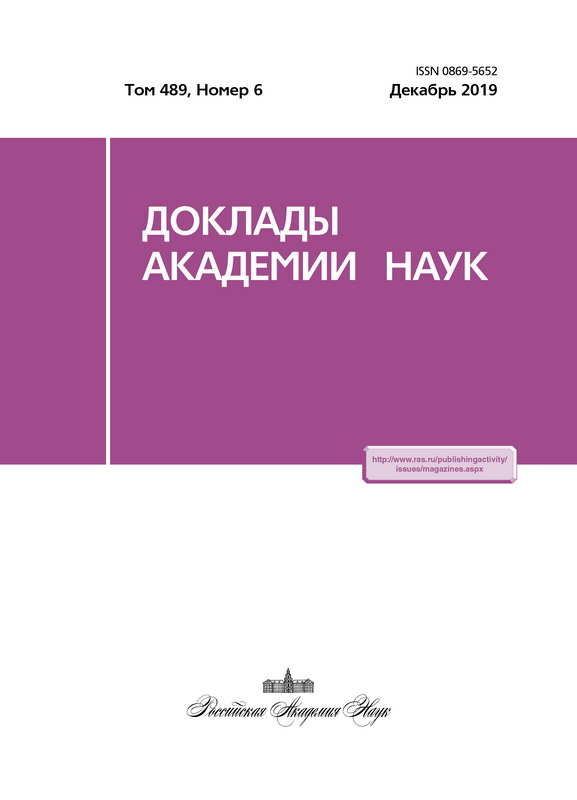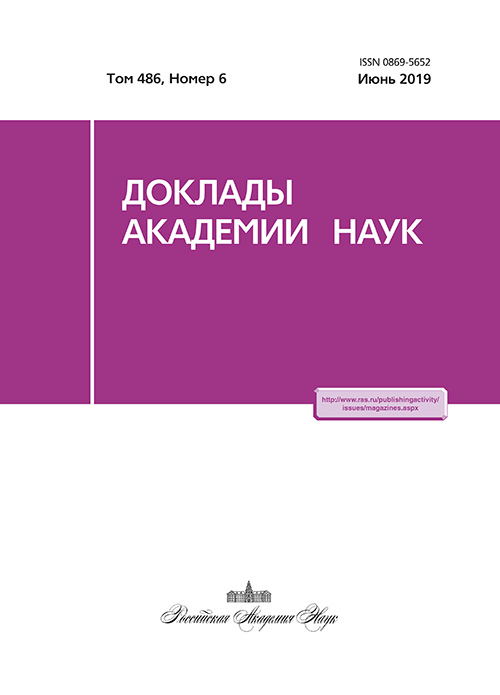Противоопухолевая активность динитрозильного комплекса железа на клетках множественной миеломы
- Авторы: Акентьева Н.П.1,2, Санина Н.А.1,3, Приходченко Т.Р.1, Гизатуллин А.Р.1, Шкондина Н.И.1, Шушанов С.С.4, Ступина Т.C.1,2, Алдошин С.М.1,3
-
Учреждения:
- Институт проблем химической физики Российской академии наук
- Научный центр Российской академии наук в Черноголовке
- Московский государственный университет имени М.В. Ломоносова
- Российский онкологический научный центр имени Н.Н. Блохина Российской академии медицинских наук
- Выпуск: Том 486, № 6 (2019)
- Страницы: 742-747
- Раздел: Биохимия, биофизика, молекулярная биология
- URL: https://journals.eco-vector.com/0869-5652/article/view/14526
- DOI: https://doi.org/10.31857/S0869-56524866742-747
- ID: 14526
Цитировать
Аннотация
Представлены результаты исследования влияния моноядерного динитрозильного комплекса железа (ДНКЖ7) с функциональными серосодержащими лигандами (донорами NO) на жизнеспособность опухолевых клеток множественной миеломы. ДНКЖ7 понижал жизнеспособность и ингибировал пролиферацию клеток множественной миеломы, т.е. обладал цитотоксичными свойствами. Методом флуоресцентного анализа установлено, что соединение ДНКЖ7 понижает уровень внутриклеточного глутатиона и повышает уровень активных форм кислорода в клетках множественной миеломы. Предполагается, что ДНКЖ7 может быть потенциальным средством для лечения онкологических заболеваний.
Ключевые слова
Об авторах
Н. П. Акентьева
Институт проблем химической физики Российской академии наук; Научный центр Российской академии наук в Черноголовке
Автор, ответственный за переписку.
Email: na_aken@icp.ac.ru
Россия, 142432, Московская обл., г. Черноголовка, просп. Академика Семенова, 1; 142432, Московская обл., Ногинский р-н, г. Черноголовка, Институтский пр., 8
Н. А. Санина
Институт проблем химической физики Российской академии наук; Московский государственный университет имени М.В. Ломоносова
Email: na_aken@icp.ac.ru
Россия, 142432, Московская обл., г. Черноголовка, просп. Академика Семенова, 1; 119991, г. Москва, ул. Ленинские горы, д.1
Т. Р. Приходченко
Институт проблем химической физики Российской академии наук
Email: na_aken@icp.ac.ru
Россия, 142432, Московская обл., г. Черноголовка, просп. Академика Семенова, 1
А. Р. Гизатуллин
Институт проблем химической физики Российской академии наук
Email: na_aken@icp.ac.ru
Россия, 142432, Московская обл., г. Черноголовка, просп. Академика Семенова, 1
Н. И. Шкондина
Институт проблем химической физики Российской академии наук
Email: na_aken@icp.ac.ru
Россия, 142432, Московская обл., г. Черноголовка, просп. Академика Семенова, 1
С. С. Шушанов
Российский онкологический научный центр имени Н.Н. Блохина Российской академии медицинских наук
Email: na_aken@icp.ac.ru
Россия, 115478, г. Москва, Каширское шоссе, 24
Т. C. Ступина
Институт проблем химической физики Российской академии наук; Научный центр Российской академии наук в Черноголовке
Email: na_aken@icp.ac.ru
Россия, 142432, Московская обл., г. Черноголовка, просп. Академика Семенова, 1; 142432, Московская обл., Ногинский р-н, г. Черноголовка, Институтский пр., 8
С. М. Алдошин
Институт проблем химической физики Российской академии наук; Московский государственный университет имени М.В. Ломоносова
Email: na_aken@icp.ac.ru
Академик РАН
Россия, 142432, Московская обл., г. Черноголовка, просп. Академика Семенова, 1; 119991, г. Москва, ул. Ленинские горы, д.1Список литературы
- Costa F., Das R., Kini Bailur J., Dhodapkar K., Dhodapkar M.V. // Front Immunol. 2018. V. 9. Article 2204. P. 1-11. doi: 10.3389/fimmu.2018.02204.
- Rigas B., Sun Y. // Brit. J. Cancer. 2008. V. 98. P. 1157-1160.
- Scicinski J., Oronskya B., Ning S., Knox S., Peehl D., Kim M.M., Langeckere P., Fangera G. // Redox Biol. 2015. V. 6. P. 1-8.
- Hirst D.G., Robson T. // Curr. Pharm. Des. 2010. V. 16. P. 45-55.
- Maciag Anna E., Holland Ryan J., Cheng Y.-S. Robert, Rodriguez Luis G., Saavedra Joseph E., Anderson Lucy M., Keefer Larry K. // Redox Biology. 2013. V. 1. P. 115-124.
- Akentieva N.P., Sanina N.A., Gizatullin A.R., Shmat¬ko N.Y., Goryachev N.S., Shkondina N.I., Prikhodchenko T.R., ¬Aldoshin S.M. // Doklady Biochemistry and Biophysics. 2017. V. 477. № 1. P. 389-393. doi: 10.1134/S1607672917060126.
- Sanina N.А., Aldoshin S.М., Shmatko N.Yu., Korcha¬gin D.V., Shilov G.V., Knyaz’kina Е.А., Ovanesyan N.S., Kulikov А.V. // New J. of Chem. 2015. V. 39. P. 1022-1030.
- Венкатараман К. Химия синтетических красителей. Л.: Государственное научно-техническое издательство Химической литературы. 1956. Т. 1. 403 с.
- Schreer A. , Tinson C., Sherry J.P., Schirmer K. // Anal. Biochem. 2005. V. 344. P. 76-85.
- Ormerod M.G., Tribukait B., Giaretti W. // Anal. Cell. Pathol. 1998. V. 17. № 2. P. 103-110.
- Oksvold M.P., Skarpen E., Widerberg J., Huitfeldt H.S.// J. Histochem. Cytochem. 2002. V. 50. P. 289-303.
- Hissin P.J., Hilf R. // Anal. Biochem. 1976. V. 74. P. 214-226.
- Калинина Е.В., Чернов Н.Н., Новичкова М.Д. // Успехи биол. химии. 2014. T. 54. C. 299-348.
- Garcia-Gimenez J.L., Markovic J., Dasi F., Queval G., Schnaubelt D., Foyer C.H., Pallardo F.V. // Biochim. et Biophys. Acta. 2013. V. 1830. P. 3304-3316.
- Cai Z., Yan L.J. // Journal of Biochem. and Pharmacol. Research. 2013. V. 1. P. 15-26.
Дополнительные файлы







